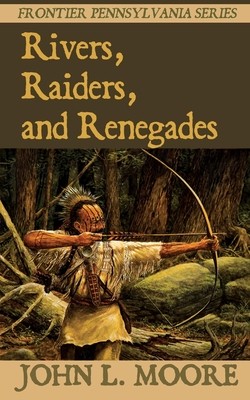
- We will send in 10–14 business days.
- Author: John L Moore
- Publisher: Sunbury Press, Inc.
- ISBN-10: 1620065150
- ISBN-13: 9781620065150
- Format: 12.7 x 20.3 x 0.6 cm, minkšti viršeliai
- Language: English
- SAVE -10% with code: EXTRA
Reviews
Description
As the Delaware Indians moved west through Pennsylvania during the 1700s, they carried with them tribal memories of the day they first met people from Europe. Their ancestors had lived along the Atlantic Ocean, and, according to tradition, which a missionary eventually wrote down, a group of Indian men in canoes had ventured out into New York Harbor to fish. Suddenly they saw a strange object floating in the ocean far to the east. When it got very close, they saw that it was a large floating house with people on it.
There are remarkable similarities between this legend and journal entries written in September 1609 by an officer of Henry Hudson's ship, the "Half Moon," as it sailed into the harbor and up the Hudson River. Author John L. Moore explores the differences and similarities of the European and Native American versions of this fateful meeting.
A work of non-fiction, "Rivers, Raiders, and Renegades" provides colorful details of the 1600s, an obscure era in colonial history. Among the many people it depicts is Etienne Brule, a young Frenchman who lived with the Indians after arriving in Canada in 1608 and who in 1615 became the first European to travel the entire length of the Susquehanna River;
Moore draws upon written observations of early colonists who described the Native Americans they encountered. Peter Lindestrom, a Delaware River colonist, reported that Indians occasionally cut themselves all over their bodies, then rubbed special ointments into the wounds so that "blue streaks" remained when the wounds healed. This made "the savages appear entirely striped and streaky," Lindestrom said. Another Delaware colonist, Johann Printz, said, "They walk naked with only a piece of cloth ... tied around their hips." In the Hudson Valley, Dutch colonist Isaack De Rasiere reported: "In the wintertime they usually wear a dressed deerskin; some have a bear's skin about the body; some a coat of scales; some a covering made of turkey feathers."
The descendants of these natives eventually passed through Pennsylvania as they migrated farther west to the Ohio River Valley or north to central and western New York. These stories are set mainly in the valleys of the Delaware, Hudson, and Susquehanna rivers.
- Author: John L Moore
- Publisher: Sunbury Press, Inc.
- ISBN-10: 1620065150
- ISBN-13: 9781620065150
- Format: 12.7 x 20.3 x 0.6 cm, minkšti viršeliai
- Language: English English
As the Delaware Indians moved west through Pennsylvania during the 1700s, they carried with them tribal memories of the day they first met people from Europe. Their ancestors had lived along the Atlantic Ocean, and, according to tradition, which a missionary eventually wrote down, a group of Indian men in canoes had ventured out into New York Harbor to fish. Suddenly they saw a strange object floating in the ocean far to the east. When it got very close, they saw that it was a large floating house with people on it.
There are remarkable similarities between this legend and journal entries written in September 1609 by an officer of Henry Hudson's ship, the "Half Moon," as it sailed into the harbor and up the Hudson River. Author John L. Moore explores the differences and similarities of the European and Native American versions of this fateful meeting.
A work of non-fiction, "Rivers, Raiders, and Renegades" provides colorful details of the 1600s, an obscure era in colonial history. Among the many people it depicts is Etienne Brule, a young Frenchman who lived with the Indians after arriving in Canada in 1608 and who in 1615 became the first European to travel the entire length of the Susquehanna River;
Moore draws upon written observations of early colonists who described the Native Americans they encountered. Peter Lindestrom, a Delaware River colonist, reported that Indians occasionally cut themselves all over their bodies, then rubbed special ointments into the wounds so that "blue streaks" remained when the wounds healed. This made "the savages appear entirely striped and streaky," Lindestrom said. Another Delaware colonist, Johann Printz, said, "They walk naked with only a piece of cloth ... tied around their hips." In the Hudson Valley, Dutch colonist Isaack De Rasiere reported: "In the wintertime they usually wear a dressed deerskin; some have a bear's skin about the body; some a coat of scales; some a covering made of turkey feathers."
The descendants of these natives eventually passed through Pennsylvania as they migrated farther west to the Ohio River Valley or north to central and western New York. These stories are set mainly in the valleys of the Delaware, Hudson, and Susquehanna rivers.


Reviews